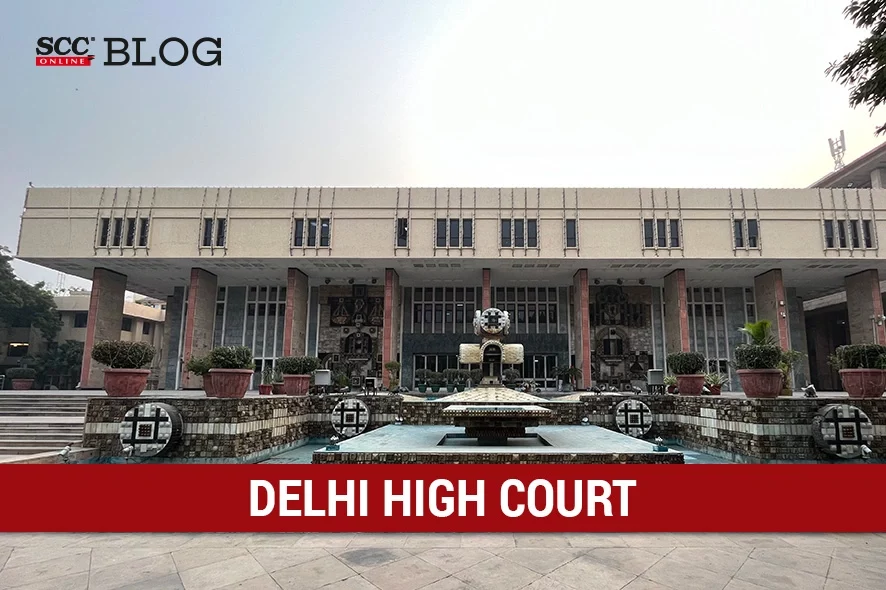Delhi High Court: A Single Judge Bench of Najmi Waziri, J.* observed that under the Delhi Preservation of Trees Act, 1994 (‘DPT Act’), there was no sanction for the 15.7 cms girth of a tree branch to be cut and thus opined that this figure was incongruous with the statutory requirements as mandated under Sections 8 and 9 of the DPT Act. The Court further had set aside the Guidelines for Pruning of Trees dated 1-10-2019 (‘Guidelines’) that permitted regular pruning of branches of trees with girth up to 15.7 cm without specific prior permission of the Tree Officer. Lastly, the Court had held that no pruning of trees would be permitted in Delhi except in accordance with the DPT Act.
Background
In the present case, the writ petition challenged the Order (‘impugned order’) passed by the NGT and sought directions apropos the procedure adopted for pruning of trees under the DPT Act and Guidelines, which had been framed under the Delhi Preservation of Trees Rules, 1996.
The Senior Advocate for the petitioners submitted that the impugned order permitting pruning of trees, based on the Guidelines was erroneous because such pruning was permitted without prior approval of and without even a site inspection or assessment of the trees concerned by the relevant authority namely, the Tree Officer/Deputy Conservator of Forests (‘DCF’). The Guidelines and the impugned order permitted private parties/entities to prune trees even on land owned by the government (i.e., the MCD, DDA and PWD).
Analysis, Law, and Decision
The Court noted that Section 8 of the DPT Act prohibits felling of trees in Delhi, except by express prior permission of the Tree Officer and permission for felling, cutting or removal of the trees was granted by the Tree Officer on an application made under Section 9 of the DPT Act and the grant of permission envisaged the examination of: (a) the trees at the site, that is, obtaining a prior view; (b) assessing the overall and specific situation obtained at the site and thereafter (c) application of mind by the Tree Officer.
The Court noted that the application for felling of trees was to be made in accordance with Rule 4 of the Guidelines and the format prescribed in Form-B required the applicant to specify the details for each tree which was sought to be felled: (a) its girth measured at a height of 1.35 metres from ground level, (b) the intended use of felled trees, (c) the purpose of land after felling of trees, and (d) appreciation of the species-wise number of trees existing at the site, amongst others.
The Court opined that “the Guidelines for Pruning of Trees were an informal administrative handbook to assist the Officers of the Department of Forests and Wildlife and they were not a part of any statute. They did not carry a statutory flavour or character. The sole objective of the DPT Act was preservation of trees. The granting of permission for cutting, girdling, lopping, pollarding, etc. of trees was to be strictly regulated and such permission was not to be granted for the asking. Yet the Guidelines permitted cutting/pruning of branches of trees having a girth/circumference up to 15.7 cms”.
The Court opined that “the Guidelines ride roughshod over all these concerns and granted a general permission for pruning of tree branches having a girth of upto 15.7 cms. The occasion to the Tree Officer to inspect or assess the health of the trees, the necessity or justification for pruning had been sought to be scuttled and taken away by the Guidelines. What was the scientific methodology employed to measure that the pruning was done only upto a girth 15.7 cms and not beyond, was not known or specified. It was mere guesswork. An estimation. The Guidelines were not a statutory enactment or an amendment of the statute. They could not abridge the mandate of the statute. Even a Regulation or Rule, which were creatures of a statute could not limit, undo, or transgress the powers, objective, and mandate of the statute itself”.
The Court observed that under the DPT Act, there was no sanction for the 15.7 cms girth of a tree branch to be cut and thus, this figure was incongruous with the statutory requirements as mandated under Sections 8 and 9 of the DPT Act. The Court opined that the so-called permission granted under the Guidelines seek to over-reach the statute and thus, the Guidelines were in conflict with the DPT Act. Therefore, the Guidelines permitting regular pruning of branches of trees with girth up to 15.7 cm without specific prior permission of the Tree Officer were set aside and the only permission that could be granted for pruning, etc. was under Section 9 of the Act.
Thus, the Court held that no pruning of trees would be permitted in Delhi except in accordance with the DPT Act and it would be open to the respondents to frame guidelines and/or rules as might be requisite.
[Sanjeev Bagai v. Department of Environment, NCT of Delhi, 2023 SCC OnLine Del 3627, decided on 29-5-2023]
Advocates who appeared in this case :
For the Petitioners: Vivek Sibal, Senior Advocate; Anu Monga, Rahul Goel, Shobhit Sharma, Parul Parmar, Paritosh Dhawan, Advocates;
For the Respondents: Shadan Farasat, Anupam, Srivastava, ASC; Divya Prakash Pande, Senior Counsel; Mreganka Kukreja, Vasuh Misra, Harsh Vardhan, Sakshi Popli, Advocates.
*Judgment authored by: Justice Najmi Waziri







